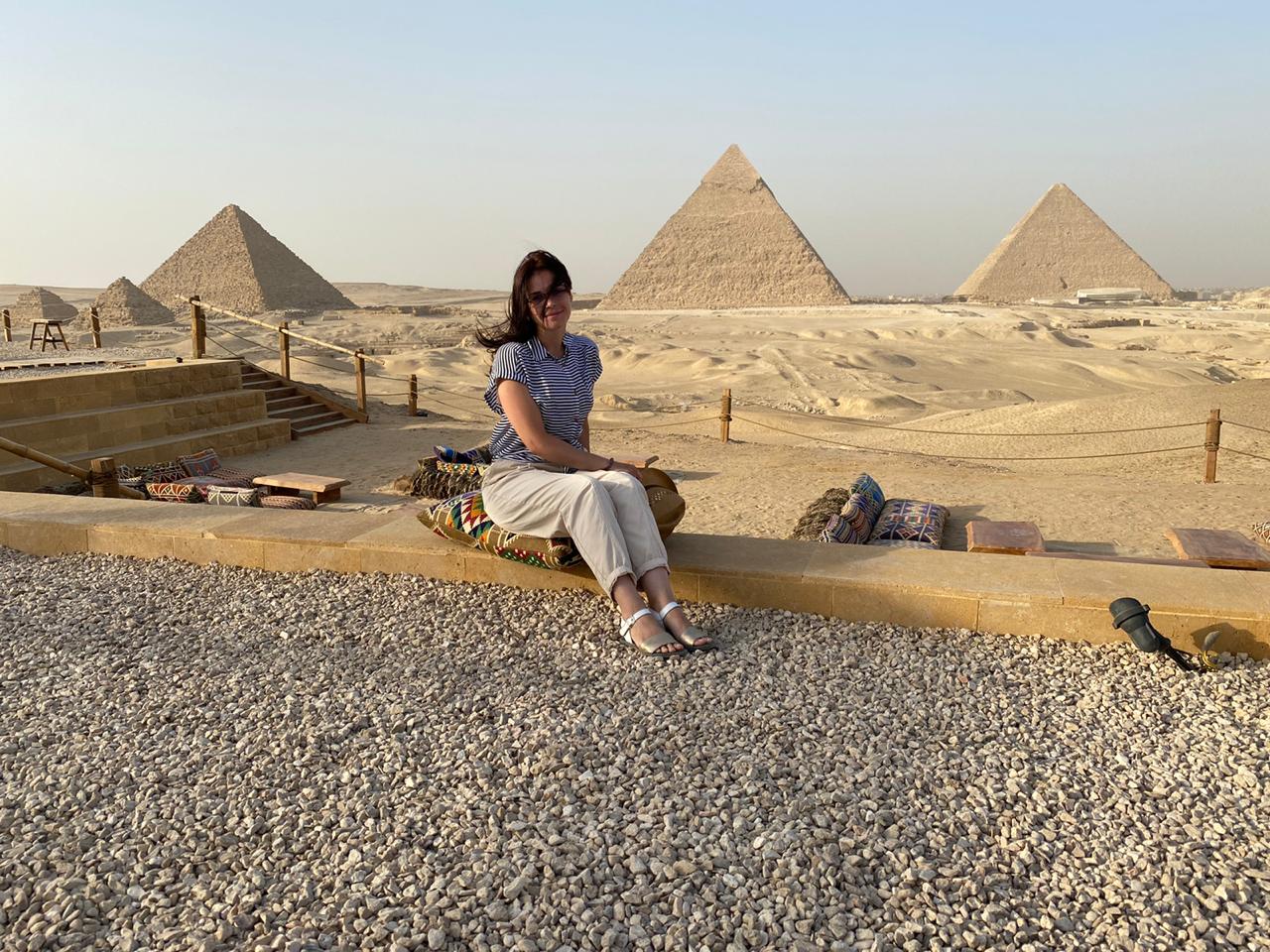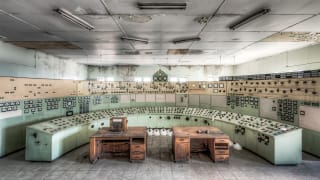Artellewa, the tiny art gallery right in the middle of Ard el-Lewa’s crowded dirt roads, is currently exhibiting photographer Ahmed Kamel’s latest work “Shop-abutting.”
Eighteen photographs are showcased in a row that runs along the walls of the gallery, simply hung on two discreet fishing lines. Each photograph depicts a man standing in front of his shop, be that a laundromat, a gym club, an accessories shop, a clothes shop or a repair shop for electronic appliances.
Ahmed Kamel photographed people from the area of Ard el-Lewa (a lower-middle-class district) walking to and fro on the neighborhood’s bustling streets to show what he considers to be “the most interesting shops, for their cluttered display windows or their bare aspect.”
“I’m fascinated with the way people organize their shops,” explains the photographer, who adds that “the people I wanted to photograph had many questions to ask before agreeing to pose in front of the camera, but most of them said yes.”
“I chose not to advise the people on how to pose," he says, "as the magic is invariably broken if you do so. The fact that some of them appear shy, uneasy or confused is precisely the reason why the picture turns out to be interesting.”
The various poses that the characters adopt in each picture are somewhat representative of their profession.
For instance the gym teacher stands, his chest swelling, in front of a short red curtain partially hiding an abandoned dumbbell lying on the floor. The man’s body posture matches the way he is supposed to look, with bulging muscles and exposed veins, and this type of detail is of great interest to the artist who notices how “people will do whatever they can to appear as people expect them to.”
A young man, dressed in the latest fashion, poses in front of his modern perfume shop like a movie star. His shiny black hair is smoothly combed backwards while his green eyes look at the camera with an air of superiority and pride. “To me, this picture is one of the best," says Kamel, since "the young man is mimicking the handsome European male model displayed in his shop window, with the same attitude and clothes.”
In another photograph, a man is sitting in a plastic chair in front of his shop, legs crossed elegantly, looking straight in front of him while plumes of smokes rise up from his half-consumed cigarette. Eissam, an Ard el-Lewa resident originally from Djibouti visiting the exhibition, is startled by “the proud expression on the man’s face… He looks like a pasha!”
Before entering Artellewa’s brightly lit premises though, Eissam had a moment of hesitation, thinking that “surely this place is not meant for people like us.” His remark is interesting, as the reason the gallery’s owner and visual artist Hamdy Reda opened the art space in Ard el-Lewa was to encourage a constant interrelation between the people of the area and art.
In a previous interview with Al-Masry-Al-Youm, Reda explained his ambition for the gallery: “I want the young generation to be acquainted with art from an early age, because thanks to their experience of seeing art on a daily basis they will be able to enjoy it fully as grown-ups.”
The older generation of Ard el-Lewa’s residents such as Eissam, after initial uncertainty, continue to step into the premises to have a quick glance at what’s on show.
An older man simply dressed in a beige jacket enters the gallery and goes directly to the picture of a carpenter proudly posing in front of his workshop with a hand firmly gripping a wooden board he’s cutting. “This is me in front of my workshop!” the visitor exclaims, spelling his name, Ibrahim el-Tayyar. “I am a carpenter, and I know all the other people posing in front of their shop,” he declares proudly.
A few minutes later an excited group of young boys tumble into the room, looking at the pictures and exclaiming “I know this guy, what is he doing in this photograph???” or, to the photographer, “How much did you pay them to pose for you?”–a question that instantly makes Kamel laugh. “I was not paid for doing these pictures, and the models were not paid either,” he tells them.
One kid with a joyful expression excitedly points at the many photographs, repeating “They are our friends, they are our friends!”
“If this exhibition facilitates the interrelation between art and the people living in this area it would be great, but I would not say it does,” the photographer says with a frown. “It will take time.”
The exhibition is on from 17-31 January
012 59 63 611




